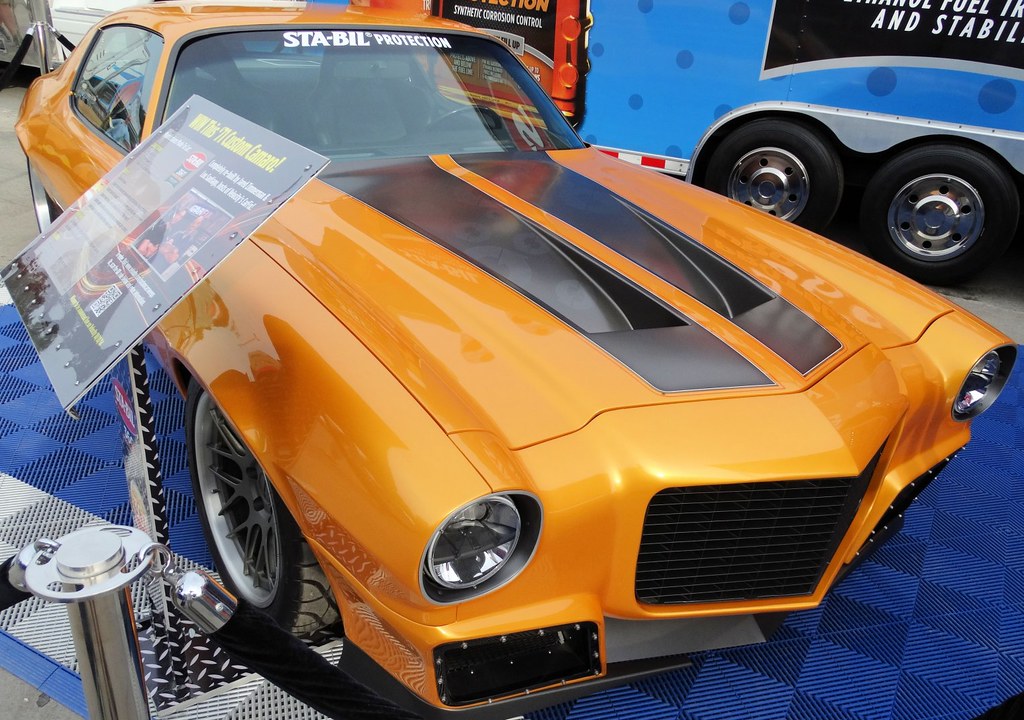
For anyone who has ever felt the visceral thrill of an engine roar, the precise feedback of a steering wheel, or the sheer artistry of a perfectly sculpted body, the world of automobiles is more than just transportation—it’s a passion, a lifestyle, a dream factory. There are vehicles that transcend mere machinery, becoming legends that fuel the fantasies of gearheads and petrolheads across the globe. These aren’t just cars; they’re rolling sculptures of ambition, engineering prowess, and unadulterated speed, etched into the collective consciousness of enthusiasts.
While the auto world continuously churns out exceptional models from every corner of the globe—American muscle, European exotics, Japanese beauties—a select few stand out. These are the machines that inspire pure drool-worthy desire, cars that fanatics might lack the bucks or perhaps even the guts to truly master, yet they forever occupy a prime spot in their ultimate dream collection. These are the benchmarks, the pioneers, the purebreds that tell the story of automotive evolution, embodying the very essence of what makes us fall in love with cars.
We’re about to embark on an exhilarating journey, a deep dive into 15 such iconic vehicles that ignite the imagination and stir the soul of every true automotive anorak. Each one represents a pinnacle of design, performance, or innovation, leaving an indelible mark on history and an unshakeable hold on our desires. Let’s peel back the layers on these mechanical masterpieces, beginning with a look at seven undisputed giants that continue to captivate and challenge our perceptions of what’s possible on four wheels.

1. **Ferrari F40**
Few cars command respect and admiration quite like the Ferrari F40, a machine that stands as a monumental testament to automotive passion and engineering. This magnificent creation was not just another supercar; it was the last car personally approved by the legendary Enzo Ferrari himself, a poignant and powerful statement before his passing. Conceived as a celebration of the brand’s 40th anniversary, the F40 encapsulated everything Ferrari stood for: uncompromising performance, breathtaking design, and a raw, unfiltered driving experience that remains unparalleled.
Crafted with an almost obsessive elegance in the heart of Italy, the F40’s aggressive stance and purposeful lines immediately convey its mission. It’s a car designed with a singular focus on speed and driving exhilaration, shedding unnecessary luxuries to deliver an unadulterated connection between driver and road. Its influence is so profound that, as the context so perfectly puts it, the F40 is “tattooed on every enthusiast’s heart,” a permanent fixture in the pantheon of automotive greatness, representing an era where raw power met focused engineering.
Underneath that iconic carbon fiber bodywork lies the beating heart of a beast: a 2.9L twin-turbocharged V8 engine. This powerhouse was engineered to produce an astounding “over 470 horsepower,” a figure that, in 1987, was simply stratospheric. This incredible power, combined with its lightweight construction, propelled the F40 to a historic achievement: it was “the first street-legal car to break the 200 mph barrier.” This wasn’t just a number; it was a declaration, solidifying the F40’s status as a pioneering hypercar that pushed the boundaries of what was thought possible for a road-going vehicle, setting a new benchmark for performance that continues to resonate today.
Car Model Information: 1990 Ferrari F40
Name: Ferrari F40
Manufacturer: Ferrari
Production: 1987–1996,1,311 produced (including LM, Competizione and GTE)
Class: Sports car
Assembly: Maranello
Predecessor: Ferrari 288 GTO
Successor: Ferrari F50
BodyStyle: berlinetta
Layout: Longitudinal engine,Rear mid-engine, rear-wheel drive layout
Engine: cvt,twin-turbo
Powerout: cvt,cvt
Transmission: manual transmission
Wheelbase: cvt
Length: cvt
Width: cvt
Height: cvt
Weight: cvt
Sp: uk
Designer: ill
Categories: 1990s cars, 24 Hours of Le Mans race cars, All articles with unsourced statements, Articles with short description, Articles with unsourced statements from July 2023
Summary: The Ferrari F40 (Type F120) is a mid-engine, rear-wheel drive sports car engineered by Nicola Materazzi with styling by Pininfarina. It was built from 1987 until 1993, with the LM, Competizione and GTE race car versions continuing production from 1994 to 1996 respectively. As the successor to the 288 GTO (also engineered by Materazzi), it was designed to celebrate Ferrari’s 40th anniversary and was the last Ferrari automobile personally approved by Enzo Ferrari. At the time it was Ferrari’s fastest, most powerful, and most expensive car for sale.
The car debuted with a planned production total of four hundred units and a factory suggested retail price of approximately US$400,000 (fivefold the price of its predecessor, the 288 GTO) in 1987 ($1,110,000 today). One of those that belonged to the Formula One driver Nigel Mansell was sold for the then record of £1 million in 1990, a record that stood into the 2010s. A total of 1,311 to 1,315 cars were manufactured with 213 units destined for the United States.
Get more information about: Ferrari F40
Buying a high-performing used car >>>
Brand: Ferrari Model: F40
Price: Not Priced Mileage: 3,511 mi.
Read more about: Beyond the Blockbuster: A Deep Dive into Dwayne ‘The Rock’ Johnson’s Multi-Million Dollar Car Collection
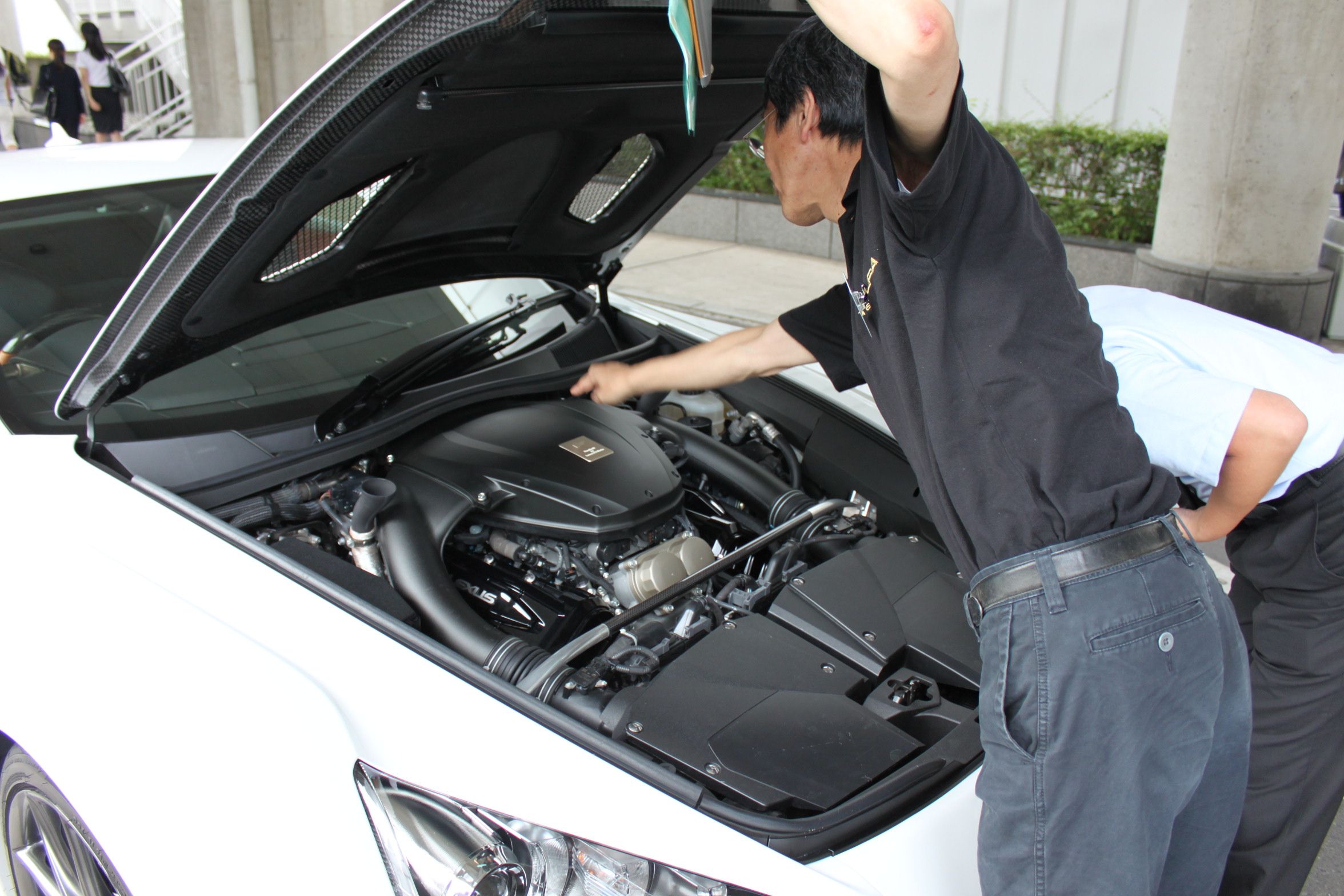
2. **Lexus LFA**
In a world often dominated by the roar of Italian or German V8s and V12s, the Lexus LFA emerged as a symphony on wheels, proving that meticulous Japanese engineering could produce not just precision, but pure, unadulterated emotion. This isn’t just a car you drive; it’s a car you *listen* to. Every gearhead knows that the LFA’s harmonic engine roars are vastly superior to any ambient music, creating an auditory experience that elevates driving to an art form. It’s a testament to Lexus’s commitment to perfection, going beyond mere horsepower to craft a holistic sensory delight.
To achieve this acoustic masterpiece, Lexus embarked on a remarkable collaboration, reaching out to the renowned musical instrument and audio equipment manufacturer, Yamaha. They specifically “asked them to co-develop the LFA’s exhaust system,” recognizing Yamaha’s expertise in creating resonant and emotionally stirring sounds. This partnership was a stroke of genius, marrying automotive engineering with acoustic artistry, ensuring that the 4.8L V10 engine didn’t just perform, but truly sang.
And sing it did. Yamaha, already celebrated for its ability to craft “heart-pumping music for car enthusiasts,” delivered beyond all expectations. The resulting exhaust note from the LFA’s V10 was so exquisitely tuned, so perfectly resonant, that it secured the car’s place as “one of the best-sounding cars of all time.” For an enthusiast, the LFA isn’t just about its impressive performance figures; it’s about the spine-tingling crescendo that accompanies every throttle input, a mechanical orchestra that defines an unforgettable driving encounter and solidifies its status as a legend.
Car Model Information: 2012 Lexus LFA Coupe 2D
Name: Lexus LFA
Manufacturer: Toyota
ModelCode: LFA10
Production: December 2010 – December 2012,500 units
Assembly: Toyota, Aichi
Class: Sports car
BodyStyle: coupé
Layout: Front mid-engine, rear-wheel-drive
Designer: Kengo Matsumoto (chief designer)
Engine: Toyota LR engine#1LR-GUE,Firing order#Even and uneven firing order,V10 engine
Transmission: List of Aisin transmissions#Longitudinal rear-wheel drive (transaxle),Automated manual transmission
Wheelbase: 2605 mm
Abbr: on
Length: 4505 mm
Width: 1895 mm
Height: 1220 mm
Weight: 3483 lb
Order: flip
Categories: All Wikipedia articles written in British English, All articles containing potentially dated statements, All articles with dead external links, Articles containing Japanese-language text, Articles containing potentially dated statements from 2020
Summary: The Lexus LFA (Japanese: レクサス・LFA, Rekusasu LFA) is a two-door sports car produced between 2010 and 2012 by the Japanese carmaker Toyota under its luxury marque, Lexus. Lexus built 500 units over its production span of two years.
The development of the LFA, codenamed TXS, began in early 2000. The first prototype was completed in June 2003, with regular testing at the Nürburgring starting in October 2004. Over the decade, numerous concept cars were unveiled at various motor shows. The first concept appeared in January 2005 at the North American International Auto Show as a design study. In January 2007, a more aerodynamic design was introduced, and in January 2008, a roadster version was showcased. The production version of the LFA debuted at the Tokyo Motor Show in October 2009—commemorating Lexus’s 20th anniversary—and the official manufacture of the car began on 15 December 2010 at the Motomachi production facility in Toyota, Aichi.
The 4.8 L 1LR-GUE V10 engine, as fitted to the LFA, produces a power output of 412 kilowatts (560 PS; 553 hp) and 480 newton-metres (350 lb⋅ft), sufficient to give the car a 0–97 km/h (60 mph) of 3.6 seconds and a maximum speed of 325 kilometres per hour (202 mph). The LFA’s body mass is composed of sixty-five per cent carbon fibre-reinforced polymer, and incorporates various lightweight materials such as aluminium, titanium and magnesium. Lexus ended production of the LFA on 17 December 2012, two years and two days after it commenced. The LFA has received awards including Road & Track’s “Best of the 2009 Tokyo Auto Show” and Top Gear’s “5 Greatest Supercars of the Year”.
Get more information about: Lexus LFA
Buying a high-performing used car >>>
Brand: Lexus Model: LFA
Price: $849,990 Mileage: 4,724 mi.
Read more about: Unlock the Vault: 15 Insider Secrets Car Journalists Swear By to Bag the Absolute Best New Car Deals from Dealers This October
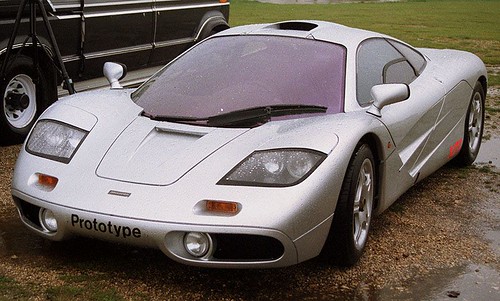
3. **McLaren F1**
The McLaren F1 isn’t merely a car; it’s a statement, a legend, and for many, the ultimate embodiment of automotive perfection. If you’re a true car fanatic, the F1 isn’t just a name you recognize; it’s a vehicle you revere, an engineering marvel that redefined what a supercar could be. Its very existence is a challenge to convention, a pursuit of ultimate performance born from the fertile mind of the iconic designer, Gordon Murray, who conceived a machine that pushed every boundary in its quest for driving purity.
Every aspect of the F1 was revolutionary, starting with its unique and instantly recognizable layout. The “Formula1-inspired center seat” positioned the driver in the absolute sweet spot, offering an unparalleled sense of control and immersion, flanked by two passenger seats for a truly unique experience. Powering this masterpiece was a bespoke “BMW V12 sat in an engine bay made out of gold,” a thermal testament to its exotic materials and meticulous construction. This immense power was channeled through a “6-speed manual transmission,” offering an unvarnished, direct connection to the astonishing performance capabilities of the car. It was capable of taking you to an mind-boggling “240 mph,” a figure that was unheard of for a production car at the time and cemented its place in history as the world’s fastest production car for many years.
The F1’s legend is further amplified by its exclusivity and the caliber of its owners. Only “106 lucky F1 owners” exist in the world, a testament to its rarity and desirability. This includes notable figures such as the famously enthusiastic Rowan Atkinson, the visionary Elon Musk, and the racing maestro Lewis Hamilton. For every petrolhead, the dream of joining this elite club, of experiencing the sheer engineering brilliance and raw performance of the McLaren F1, is a constant, almost spiritual aspiration. Its blend of F1 pedigree, unparalleled speed, and uncompromising design makes it endlessly cool and utterly coveted.
Read more about: Beyond the Blockbuster: A Deep Dive into Dwayne ‘The Rock’ Johnson’s Multi-Million Dollar Car Collection
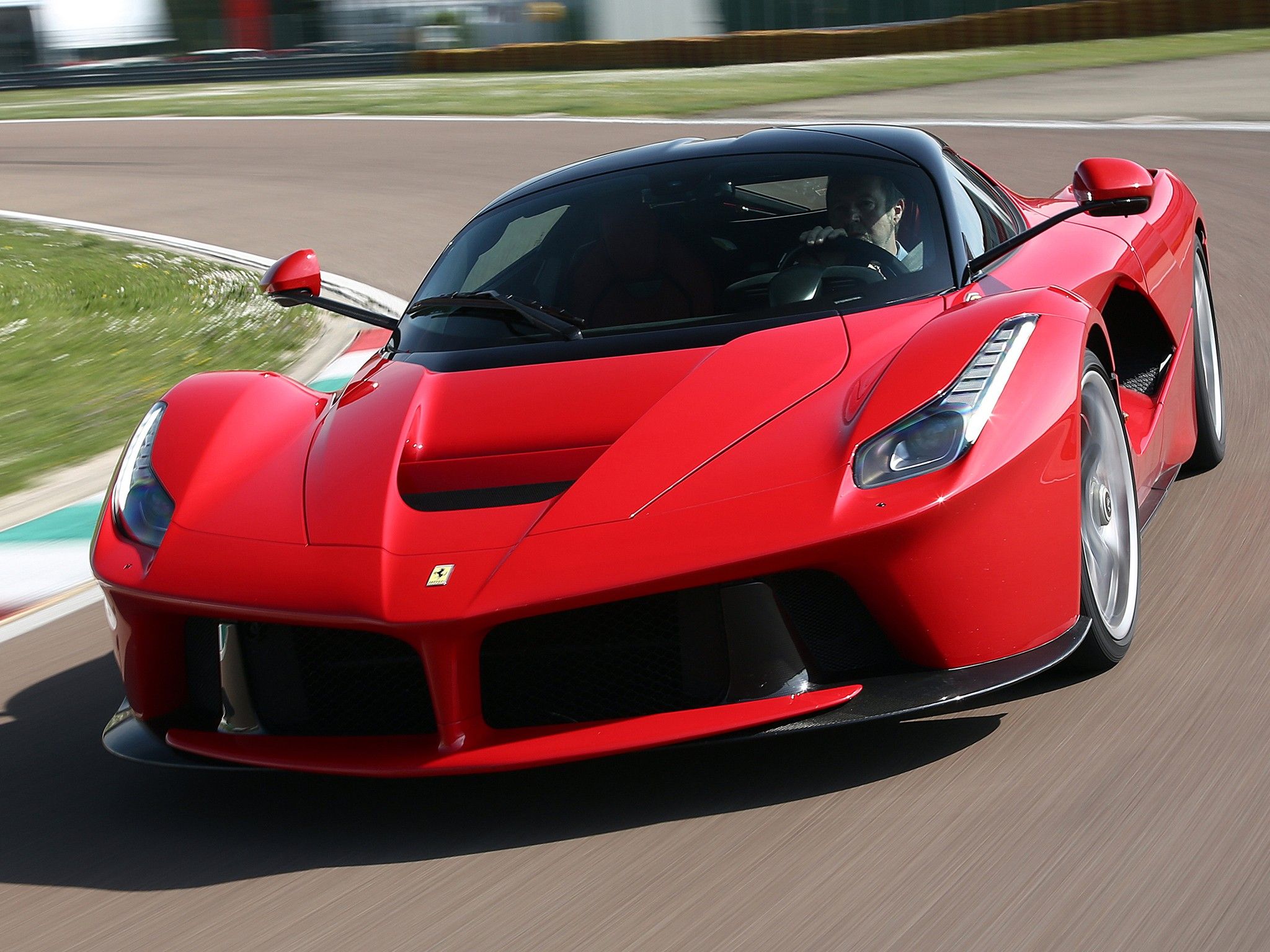
4. **Ferrari LaFerrari**
As part of the revered ‘Holy Trinity of Hypercars,’ the Ferrari LaFerrari stands as a modern titan, a breathtaking fusion of traditional Italian automotive passion and cutting-edge hybrid technology. This Italian stallion doesn’t just chase speed; it embraces it with an electrifying intensity, presenting a vision of what a twenty-first-century hypercar can achieve. Its aggressive yet elegant form hints at the incredible power and sophistication hidden beneath its sculpted panels, making it an instant icon that demands attention and respect.
The heart of the LaFerrari is a marvel of contemporary engineering: a potent “6.3L V12 engine harmoniously integrated with a KERS hybrid system assist.” This sophisticated powertrain doesn’t just generate power; it unleashes it, producing an awe-inspiring total of “around 950 horsepower.” This colossal output is delivered with an immediacy and ferocity that only a hybrid system can provide, ensuring instantaneous response and relentless acceleration that pins you back in your seat. The LaFerrari isn’t just about raw power; it’s about intelligent power delivery, a symphony of internal combustion and electric thrust working in perfect concert.
With such formidable power at its disposal, the LaFerrari is capable of truly astonishing speeds, enabling it to “go over 220 mph.” But its appeal extends beyond mere numbers. The vehicle’s strikingly beautiful appearance, a sculptural masterpiece, is perfectly encapsulated by its name. As the translation of LaFerrari suggests, it is unequivocally “”The Ferrari.”” It is the definitive expression of the brand’s identity, a bold declaration of its capabilities and its enduring legacy, combining blistering performance with a design language that speaks volumes about Italian artistry and automotive excellence. For collectors and enthusiasts, it’s more than a car; it’s a statement, a pinnacle, and a piece of automotive art that embodies pure exhilaration.
Car Model Information: 2014 Ferrari LaFerrari 2dr Cpe
Name: LaFerrari
Manufacturer: Ferrari
ModelCode: F150
Production: 2013–2018
ModelYears: 2013–2016 (coupé),2016–2018 (Aperta)
Assembly: Maranello
Designer: Flavio Manzoni
Class: Sports car
BodyStyle: coupé
Layout: Rear mid-engine, rear-wheel-drive layout
Related: Ferrari FXX-K,Ferrari Daytona SP3
Engine: Ferrari F140 engine,V12 engine
Motor: Kinetic energy recovery system
Transmission: Dual-clutch transmission
Powerout: Convert
Wheelbase: 2650 mm
Abbr: on
Length: 4702 mm
Width: 1992 mm
Height: 1116 mm
Weight: 3495 lb
Order: flip
Predecessor: Ferrari Enzo
Successor: Ferrari F80
Sp: uk
Doors: Butterfly doors
Categories: All Wikipedia articles written in British English, Articles with short description, CS1 Italian-language sources (it), Cars discontinued in 2018, Cars introduced in 2013
Summary: The LaFerrari (project name F150) is a limited production mid-engine, mild hybrid sports car built by Italian automotive manufacturer Ferrari. Its name means “The Ferrari” in Italian, as it is intended to be the definitive Ferrari.
Get more information about: LaFerrari
Buying a high-performing used car >>>
Brand: Ferrari Model: LaFerrari
Price: $4,999,000 Mileage: 2,608 mi.
Read more about: Beyond the Blockbuster: A Deep Dive into Dwayne ‘The Rock’ Johnson’s Multi-Million Dollar Car Collection
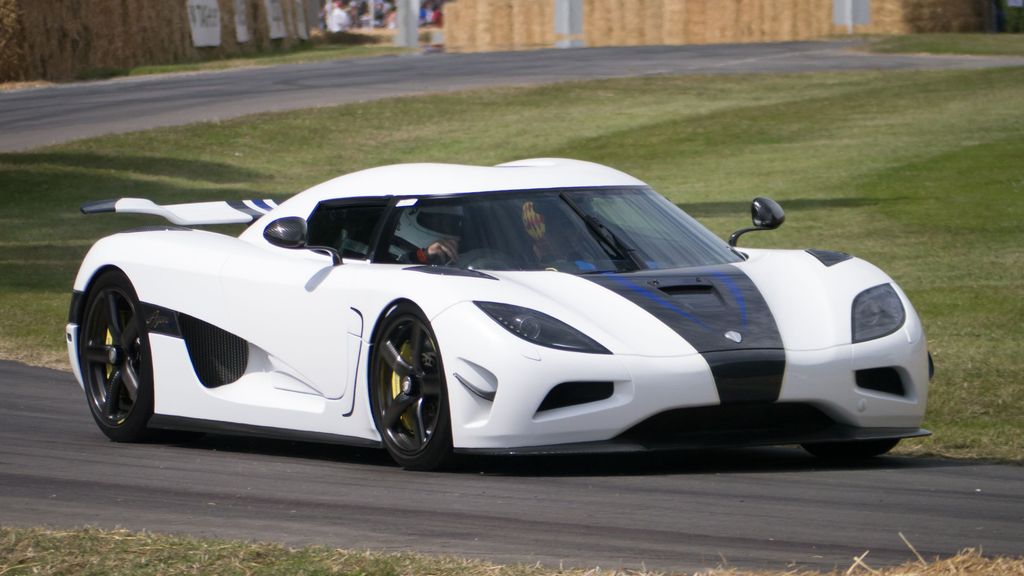
5. **Koenigsegg Agera RS**
The Koenigsegg Agera RS is not merely a car; it’s a hypercar with an attitude, an even more aggressive and audacious evolution of the already fierce Agera R. This Swedish masterpiece represents the absolute pinnacle of engineering and a relentless pursuit of speed, a testament to what happens when brilliant minds, led by Christian Von Koenigsegg, dare to challenge the impossible. The team under his guidance didn’t just build a car; they broke engineering limits, crafting a machine that was destined to rewrite the record books and send shockwaves through the automotive world.
In 2017, the Agera RS roared onto the scene with a singular purpose: to end the dominance of the Bugatti Chiron in the realm of top-speed records. And it succeeded spectacularly. This monster of a machine, born from a desire to push boundaries, showcased an incredible blend of aerodynamic efficiency and sheer brute force, leaving no doubt about its intentions. It was a clear declaration that Koenigsegg was a force to be reckoned with, capable of outperforming even the most established giants in the hypercar arena.
The heart of this record-breaking marvel is its potent “5.0L twin-turbo engine,” which, through Koenigsegg’s relentless optimization, now produces “more than 1000 horsepower.” This gargantuan power output, combined with its meticulous engineering, enables the Agera RS to achieve a mind-bending top speed of “upto 278 MPH.” For any car enthusiast, especially those with a penchant for extreme performance, this Swedish masterpiece isn’t just a car; it’s an item at the very top of their “”if I ever get rich”” list. It’s a symbol of ultimate speed, engineering ingenuity, and the audacious spirit that defines the hypercar segment.
Car Model Information: 2020 Ford Mustang GT Premium
Name: Koenigsegg Agera
Manufacturer: Koenigsegg
Production: 2010–2018
Assembly: Ängelholm
Predecessor: Koenigsegg CCX
Successor: Koenigsegg Jesko
Doors: Dihedral Synchro-Helix
Class: Sports car
BodyStyle: targa top
Layout: Rear mid-engine, rear-wheel-drive layout
Engine: 5.0 L
Abbr: on dry
Powerout: ubl
Lk: on
Transmission: Semi-automatic transmission
Wheelbase: 2662 mm
Length: 4293 mm
Width: 1996 mm
Height: 1120 mm
Weight: ubl
Designer: Christian von Koenigsegg
Categories: All Wikipedia articles written in British English, All articles with unsourced statements, Articles with empty listen template, Articles with short description, Articles with unsourced statements from August 2024
Summary: The Koenigsegg Agera is a mid-engine sports car produced by Swedish car manufacturer Koenigsegg. It is a successor to the CCX/CCXR. The name comes from the Swedish verb ‘agera’ which means “to act” or in imperative form “(You) act”.
It was named Hypercar of the Year in 2010 by Top Gear magazine. The Agera RS variant became the world’s fastest production car in 2017, setting a record with a GPS-verified two-way average top speed of 447 km/h (278 mph) and a fastest straight-line speed of 458 km/h (285 mph).
The Agera ceased production in July 2018 with the unveiling of the two final edition cars at the 2018 Goodwood Festival of Speed. It was succeeded by the Jesko in 2019.
Get more information about: Koenigsegg Agera
Buying a high-performing used car >>>
Brand: Koenigsegg Model: Agera RS
Price: $40,514 Mileage: 12,011 mi.
Read more about: The Fastest SUVs on the Road

6. **Porsche 911 GT3 RS**
For the purist, the driver, and anyone who dreams of carving apexes with precision, the Porsche 911 GT3 RS stands as an unparalleled icon. This is a car that defies expectations: a “track-ready car that is road-legal.” It’s the ultimate dual-purpose machine, designed to dominate lap records on the world’s most challenging circuits while still possessing the civility to be driven home afterward. The mere thought of piloting a 911 GT3 RS around ‘The Green Hell,’ the legendary Nürburgring Nordschleife, is a fantasy almost all of us have pictured, and for good reason.
At its core, the GT3 RS is a celebration of naturally aspirated power and mechanical grip. Its high-revving “4.0L flat-six” engine is a masterpiece, eagerly screaming its way to a phenomenal redline of “upto 9000 RPM.” This extraordinary rev range delivers a visceral, unadulterated power delivery that connects the driver directly to the machine, offering an experience few other cars can match. Combined with its “clever aerodynamics,” which generate incredible downforce, this track beast truly “eats lap records for breakfast,” consistently proving its mettle against far more exotic and powerful machinery.
What makes the GT3 RS even more attractive to enthusiasts, especially in an era of rapidly disappearing manual transmissions, is its unwavering commitment to driver engagement. Surprisingly, “it still offers a manual transmission in 2024,” a rare and cherished feature that appeals directly to those who value the art of driving. This dedication to the enthusiast, coupled with its devastating track performance and iconic 911 lineage, ensures the GT3 RS remains one of the most desirable and respected driver’s cars on the planet, a true dream machine for those who live for the thrill of the drive.
Read more about: Beyond the Hype: 10 Aftermarket Car Modifications You Should Strictly Avoid
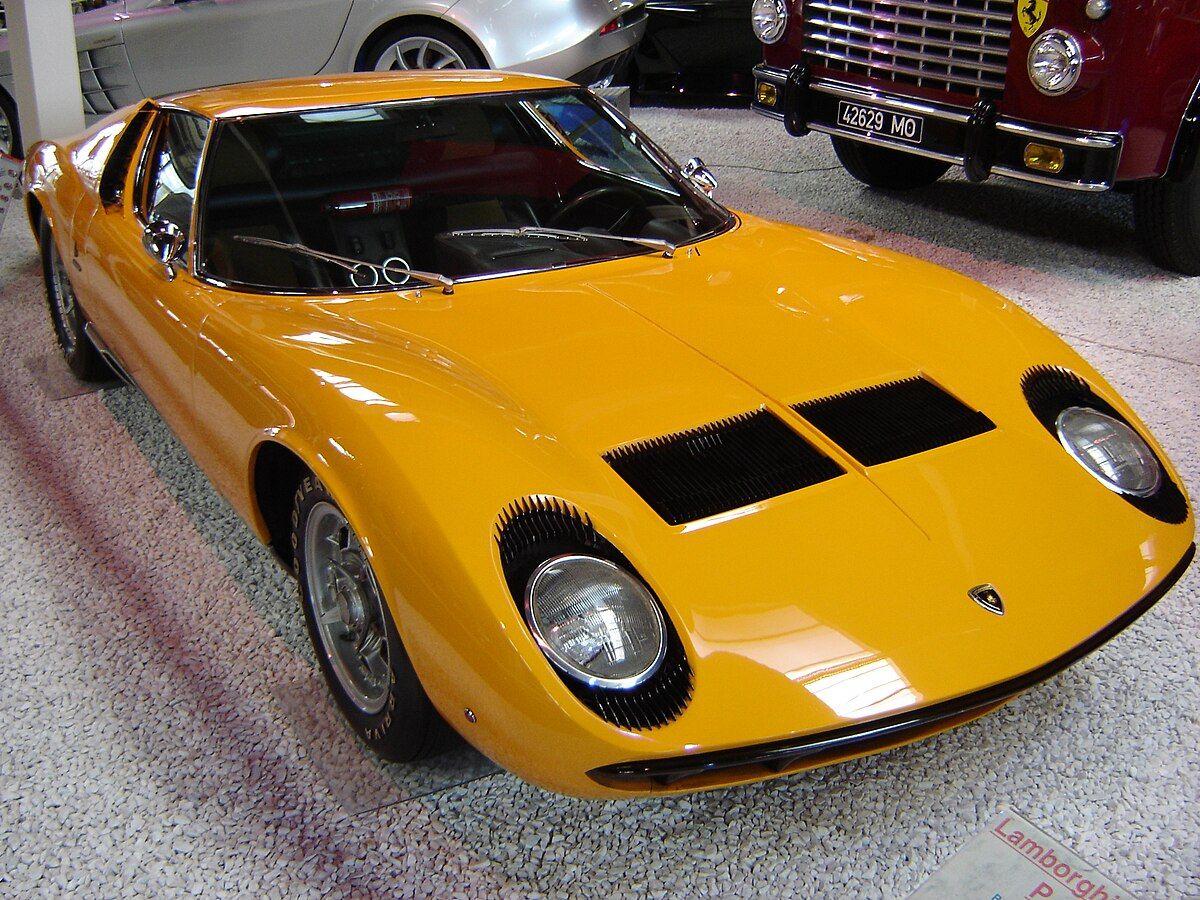
7. **Lamborghini Miura**
The Lamborghini Miura is not just a classic supercar; it is, in many respects, the original, the progenitor, the magnificent beast that truly “started it all” for a lineage of automotive legends. Before the Miura, Lamborghini was known for its elegant grand tourers, but with its introduction in 1966, the company unequivocally declared its intention to dominate the performance world. This stunning vehicle didn’t just launch a new model; it inaugurated a whole new class of automobile, fundamentally altering perceptions of what a road car could be.
Building on the successful foundation laid by the 350GT, Lamborghini unveiled the Miura, and the automotive landscape was forever changed. Its sensuous, flowing lines, penned by Marcello Gandini at Bertone, were unlike anything seen before, instantly captivating audiences worldwide. But its innovation wasn’t just skin deep; the Miura was a pioneer in its engineering. It proudly held the distinction of being “the first to offer a rear mid-engine layout” for a high-performance road car, a configuration that has since become the standard for supercars, demonstrating its profound influence on future designs and setting a new benchmark for vehicle dynamics and aesthetics.
The Miura’s legacy is immense and undeniable. Its groundbreaking design and revolutionary engineering paved the way for an entire dynasty of iconic V12-powered machines that followed. The legendary names that came after—the aggressive Countach, the daring Diablo, the powerful Murcielago, and the visceral Aventador—all “continued the Miura’s legacy.” It’s a lineage built on audacious design, incredible performance, and an unmistakable Italian flair, all beginning with this singular, breathtaking supercar. The Miura remains a timeless piece of automotive art and engineering, a dream car that continues to inspire awe and reverence for its role in shaping the very definition of a supercar.
While the previous seven legends set an incredibly high bar for engineering prowess and driving exhilaration, the automotive universe is vast and filled with countless other dream machines, each with its own compelling narrative and enduring allure. These next eight icons represent a diverse tapestry of automotive history, showcasing unique development stories, profound cultural impacts, and the sheer charisma that cements their place in the pantheon of cars every enthusiast yearns to own. They are more than mere statistics; they are rolling testaments to innovation, passion, and the relentless pursuit of automotive perfection.
Read more about: Gear Up for Glory: 15 Unforgettable Rides That Defined the Legendary 1970s Automotive Scene
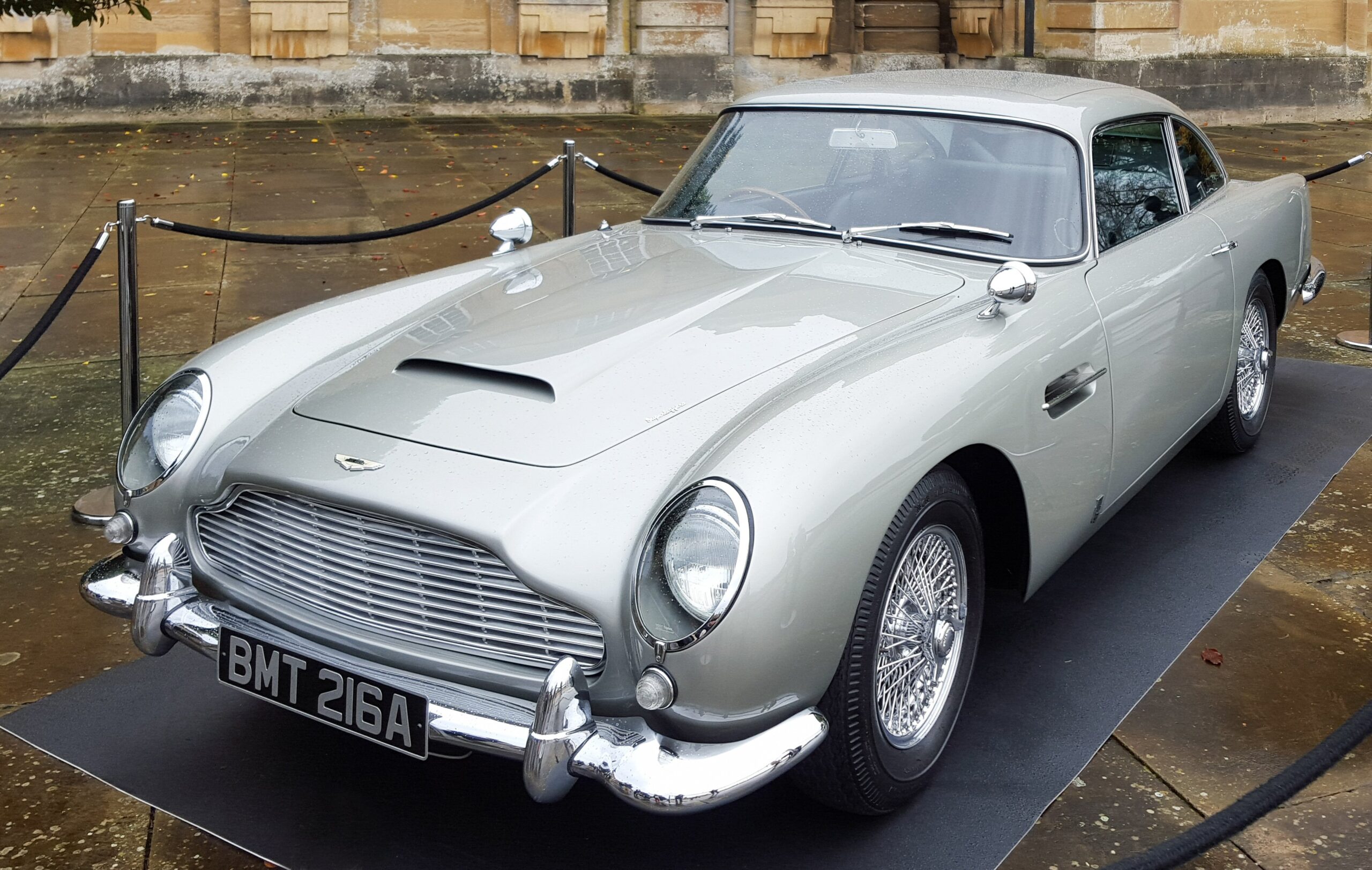
8. **Aston Martin DB5**
For many, the Aston Martin DB5 isn’t just a car; it’s a cinematic icon, forever immortalized as the quintessential vehicle of James Bond. Its indelible association with espionage and sophistication has imbued it with a cultural cachet that few other automobiles can rival, making it far more than simply a mode of transport. This British masterpiece transcends the realm of mere machinery, becoming a symbol of cool, adventure, and timeless elegance that continues to captivate enthusiasts across generations.
Beneath its elegantly sculpted exterior, the DB5 offered a remarkable blend of performance and refinement for its era. Introduced in 1963, it boasted a potent 4-liter six-cylinder engine, capable of generating an impressive 282 horsepower. This power output was significant for the time, providing a thrilling yet sophisticated driving experience that firmly established Aston Martin at the forefront of luxury grand touring, proving that beauty and brawn could indeed coexist in perfect harmony.
Beyond its performance figures, the DB5 stood out for its meticulous craftsmanship and groundbreaking features. Its elegant design, penned by Carrozzeria Touring Superleggera, exuded an air of understated power and sophistication. Furthermore, the car came equipped with then-luxurious amenities such as electric windows and even a fire extinguisher, features that were considered cutting-edge innovations in the early 1960s. These details underscored its position as a truly premium vehicle, showcasing an attention to detail that few competitors could match.
To this day, the DB5 remains a potent symbol of British luxury and performance, embodying a golden age of motoring when style and engineering were equally paramount. Its blend of historical significance, film stardom, and inherent automotive excellence ensures it can never be disapproved of by an enthusiast. It holds an almost mythical status, a perpetual fantasy car that continues to inspire awe and admiration in equal measure.
Car Model Information: 2020 Ford Mustang GT Premium
Name: Aston Martin DB5
Manufacturer: Aston Martin
Production: 1963–1965 (1,059 units),2020 (25 units)
Assembly: Newport Pagnell,England
Designer: Carrozzeria Touring Superleggera
Class: Grand tourer
BodyStyle: coupé
Layout: Front-engine, rear-wheel-drive layout
Engine: DOHC,Straight-6,3995 cc
Order: flip
Abbr: on
Powerout: convert
Transmission: ZF Friedrichshafen
Length: 4570 mm
Width: 1680 mm
Wheelbase: 98.0 in
Predecessor: Aston Martin DB4
Successor: Aston Martin DB6
Doors: 2
Weight: 3311 lb
Sp: uk
Categories: All Wikipedia articles written in British English, Articles with short description, Aston Martin vehicles, CS1: unfit URL, Cars discontinued in 1965
Summary: The Aston Martin DB5 is a British grand tourer (GT) produced by Aston Martin and designed by Italian coachbuilder Carrozzeria Touring Superleggera. Originally produced from 1963 to 1965, the DB5 was an evolution of the final series of DB4. The “DB” designation is from the initials of David Brown who built up the company from 1947 onwards.
The DB5 is best-known for its role in the James Bond films. It was first driven by the fictional spy in the film Goldfinger (1964). In 2013, the car featured on a “British Auto Legends” postage stamp issued by the Royal Mail.
Get more information about: Aston Martin DB5
Buying a high-performing used car >>>
Brand: Aston Martin Model: DB5
Price: $40,514 Mileage: 12,011 mi.
Read more about: Unlocking Hollywood’s Vault: A Deep Dive into the Most Valuable Movie Memorabilia Ever Sold at Auction
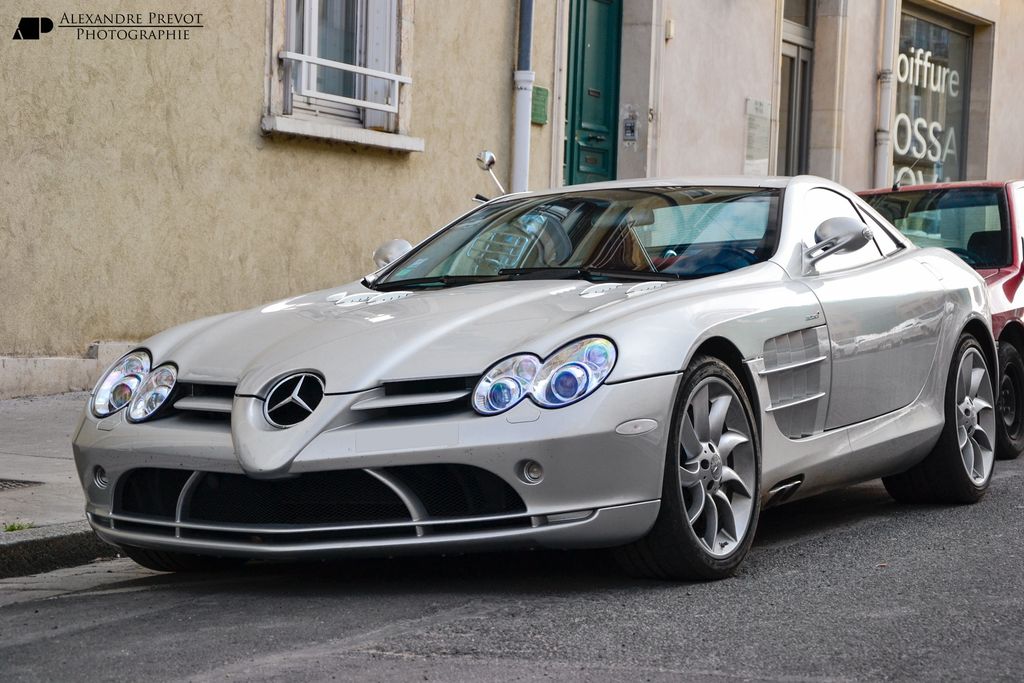
9. **Mercedes-Benz SLR McLaren**
The Mercedes-Benz SLR McLaren stands as a magnificent, albeit bittersweet, monument to a powerful collaboration. Born as the “last hurrah” before the celebrated partnership between Mercedes-Benz and McLaren came to an end, this grand tourer quickly cemented its status as everyone’s favorite poster car back in the early 2000s. It was a bold statement, a car that perfectly encapsulated the technological prowess of both marques, merging high-performance engineering with luxurious comfort in an unforgettable package.
The SLR’s striking design was a direct homage to the legendary 1955 300 SLR, a racing icon that had dominated its era. This lineage was evident in its distinctive long bonnet and sleek, aerodynamic lines, which not only paid tribute to its illustrious predecessor but also ensured exceptional high-speed stability and visual drama. The design elements were meticulously crafted, from the distinctive side gills to the prominent grille, all contributing to an unmistakable presence that commanded attention on any road.
Underneath that imposing hood lay a formidable heart: a 5.4L supercharged V8 engine. This powerhouse, engineered for both prodigious speed and refined power delivery, was mated to a sophisticated 5-speed gearbox with Touchshift control, allowing for both automatic ease and manual engagement. This potent combination meant that reaching “over 200 MPH” was nothing short of effortless for the SLR, solidifying its credentials as a true autobahn stormer and a formidable contender in the supercar arena.
The car’s unique blend of performance, luxury, and heritage has earned it immense love and admiration, particularly among discerning collectors. Its desirability is so profound that individuals like the renowned car collector Manny Khoshbin are known to own as many as eight of them, a testament to its enduring appeal and status as a highly coveted piece of automotive history. The SLR McLaren remains a fascinating chapter in the story of high-performance grand tourers, a car whose allure only seems to grow with time.
Car Model Information: 2020 Ford Mustang GT Premium
Sp: uk
Name: Mercedes-Benz SLR McLaren
Manufacturer: DaimlerChrysler,Daimler AG,McLaren Automotive
Production: 2003–2010,2,157 produced
Assembly: Surrey,Woking,England
Designer: Gordon Murray,Gorden Wagener
Class: Grand tourer
BodyStyle: coupé
Layout: Front mid-engine, rear-wheel-drive layout
Engine: 5439 cc
Abbr: cite web
Order: supercharged,Mercedes-Benz M113 engine#M155,V8 engine
Powerout: 626 PS
Transmission: 5G-Tronic,automatic transmission
Wheelbase: 2700 mm
Length: 4656 mm
Width: 1909 mm
Height: 1261 mm
Weight: convert,1791.5 kg
Predecessor: Mercedes-Benz 300 SLR
Successor: Mercedes-Benz SLS AMG
Doors: Butterfly doors
ModelYears: 2004–2010
Categories: All Wikipedia articles written in British English, All articles needing additional references, All articles with dead external links, Articles needing additional references from November 2018, Articles with dead external links from January 2018
Summary: The Mercedes-Benz SLR McLaren (C199 / R199 / Z199) is a grand tourer jointly developed by German automotive manufacturer Mercedes-Benz and British automobile manufacturer McLaren Automotive and sold from 2003 to 2010. When the car was developed, Mercedes-Benz owned 40 percent of the McLaren Group and the car was produced in conjunction between the two companies. The “SLR” name is an abbreviation for “Sport Leicht Rennsport” (Sport Light Racing), and was a homage to the Mercedes-Benz 300 SLR which served as the car’s inspiration. The car was offered in coupé, roadster and speedster bodystyles, with the latter being a limited edition model.
Get more information about: Mercedes-Benz SLR McLaren
Buying a high-performing used car >>>
Brand: Mercedes-Benz Model: SLR McLaren
Price: $40,514 Mileage: 12,011 mi.
Read more about: President Donald Trump’s Automotive Empire: A Comprehensive Look at His Iconic Car Collection, Past and Future
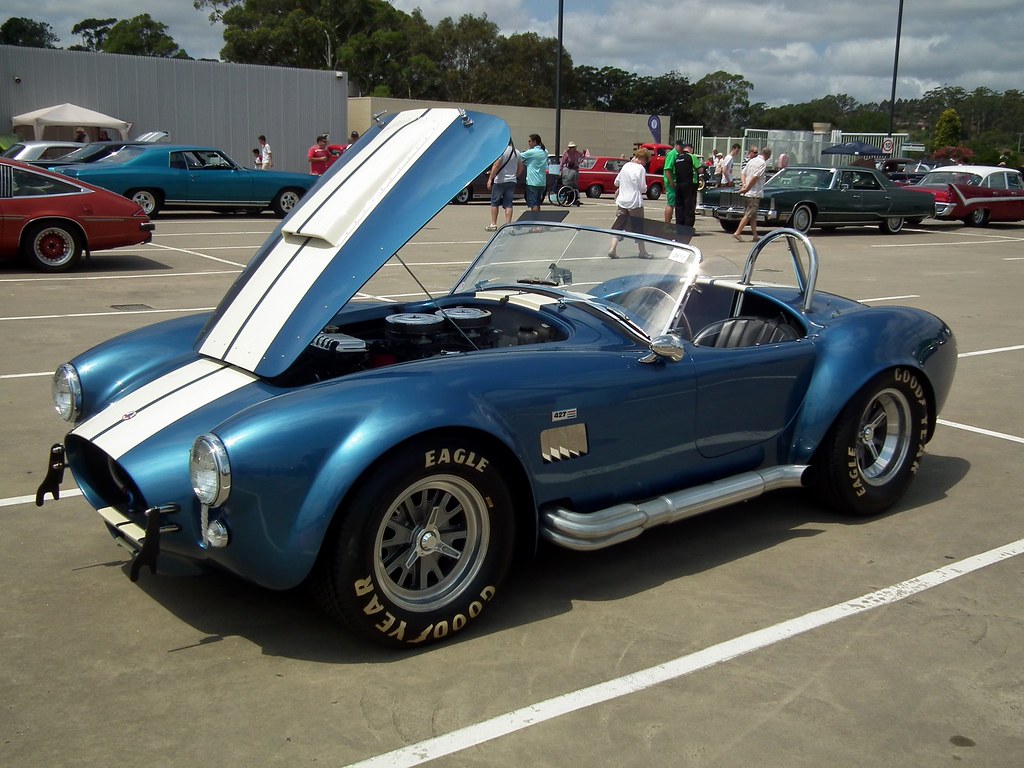
10. **Shelby Cobra 427**
When we speak of raw, untamed performance and an iconic design that screams American muscle, the Shelby Cobra 427 immediately springs to mind. Who doesn’t want a car designed by the legendary Carroll Shelby himself? This machine is more than just a car; it’s a piece of automotive folklore, a quintessential American sports classic that embodies a spirit of uncompromising power and aggressive simplicity. It represents a bygone era where a direct connection between driver and machine was paramount, devoid of electronic nannies or excessive refinement.
Carroll Shelby’s genius lay in his straightforward yet devastatingly effective formula: take an open-top, lightweight AC Ace body and fit it with a truly massive 7.0L V8 engine. This seemingly simple combination created an automotive monster, endowing the Cobra with “incredible acceleration” that could humble far more exotic and expensive machinery of its time. The visceral thrill of that enormous engine, barely contained by the lightweight chassis, offered an unfiltered driving experience unlike any other, demanding respect and skill from its pilot.
Driving a Cobra 427 isn’t just about speed; it’s about a deep, resonant connection to the road and the raw power at your command. The absence of a roof and the direct feedback through the steering wheel amplify every sensation, making every journey an exhilarating challenge. This untamed character and the sheer audacity of its design are precisely what endear it to pure driving enthusiasts, who appreciate a car that requires engagement and rewards bravery.
However, owning such a legend remains a dream for many, largely due to its extreme exclusivity and formidable price tag. With a limited production run of “only 260 ever made,” the Cobra 427 is a rare sight and an even rarer acquisition. Its scarcity, combined with its iconic status and raw performance, ensures that it continues to occupy a prime spot in the fantasies of countless automobile enthusiasts, a timeless symbol of American automotive might and unadulterated speed.
Car Model Information: 2020 Ford Mustang GT Premium
Caption: AC Cobra 427
Layout: front-engine, rear-wheel drive layout
Manufacturer: AC Cars,Shelby American
Production: 1965–1967
Name: MkIII
Aka: AC Shelby Cobra , Shelby AC Cobra
BodyStyle: Roadster (automobile)
Assembly: Thames Ditton,Surrey,England
Predecessor: AC Ace
Class: Sports car
Successor: AC MK IV
Related: AC 428,Shelby Daytona
Engine: cvt,V8 engine
Wheelbase: cvt
Length: cvt
Width: cvt
Height: cvt
Weight: cvt
Categories: 1960s cars, AC vehicles, All articles with unsourced statements, Articles with short description, Articles with unsourced statements from December 2014
Summary: The AC Cobra, sold in the United States as the Shelby Cobra and AC Shelby Cobra, is a sports car manufactured by British company AC Cars, with a Ford V8 engine. It was produced intermittently in both the United Kingdom and later the United States since 1962.
Get more information about: AC Cobra
Buying a high-performing used car >>>
Brand: Shelby Model: Cobra 427
Price: $40,514 Mileage: 12,011 mi.
Read more about: The Road to Riches: 15 Classic Cars Skyrocketing in Value for Savvy Enthusiasts
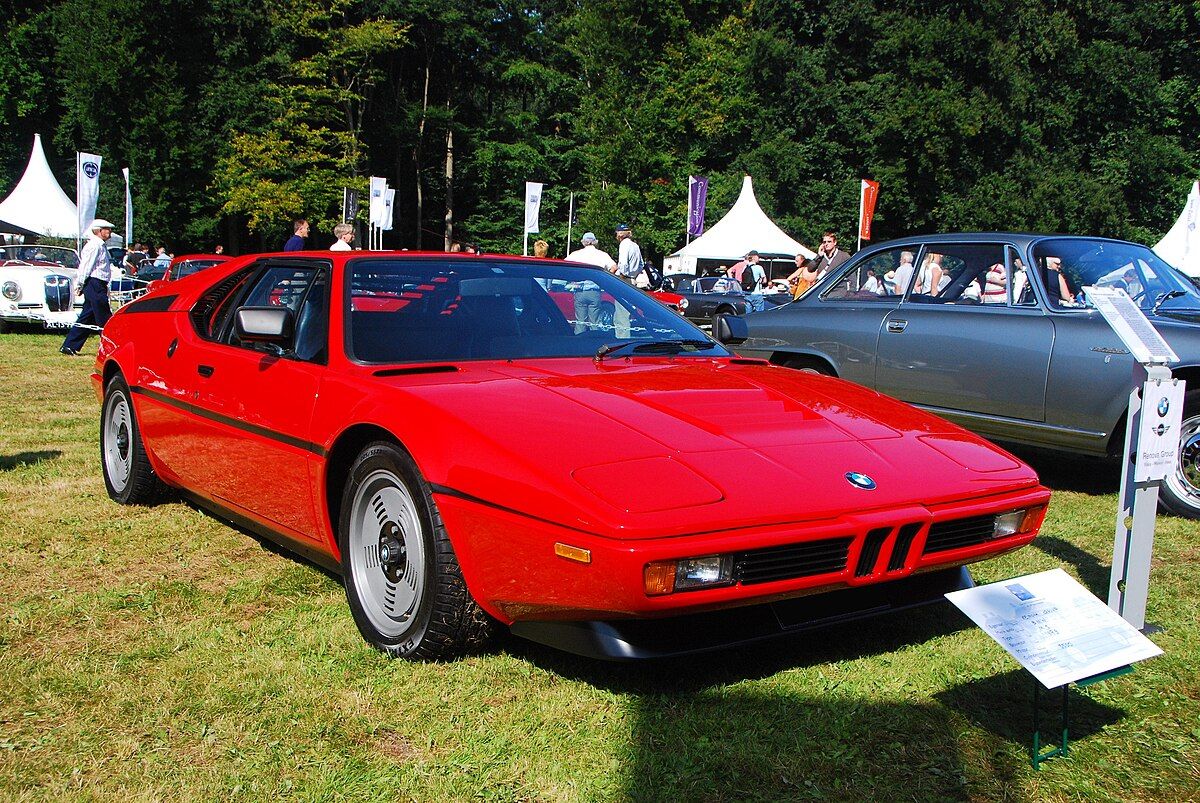
11. **BMW M1**
The BMW M1 holds a unique and revered place in the pantheon of automotive legends, often heralded as “one of the best classic BMWs ever to exist”—a claim that is undeniably difficult to dispute. This distinctive mid-engined supercar represents a fascinating chapter in BMW’s history, standing apart from its more conventional, front-engined siblings. It was a bold departure for the brand, embodying a blend of motorsport ambition and exotic road car appeal that has rarely been seen since.
The genesis of the M1 is as captivating as the car itself. It was initially conceived with a singular purpose: to serve as a race car, built to dominate in the Group 5 racing series. However, the path to production was fraught with challenges, notably a collaboration with Lamborghini that experienced significant delays. These unforeseen hurdles ultimately led to the M1’s birth as a road-going supercar, transforming a racing dream into a street-legal icon and adding layers of intrigue to its already compelling story.
What emerged from this tumultuous development was a truly special machine. The M1 boasted a “hand-built timeless Italian design,” largely attributed to Giorgetto Giugiaro at Italdesign, which gave it an exotic flair unlike any other BMW. This stunning aesthetic was paired with a sophisticated 3.5L straight-six engine, an engineering masterpiece from BMW that provided robust performance and a distinctive soundtrack. This fusion of Italian artistry and German engineering precision made it a genuinely worthy addition to any list of automotive greats.
The BMW M1’s rarity, its unique development narrative, and its status as the brand’s only true mid-engined supercar have ensured its enduring appeal. It’s a collector’s dream, a testament to a time when BMW dared to challenge the established supercar elite, creating a machine that remains as visually striking and dynamically engaging today as it was when it first rolled off the production line. Its allure lies in its blend of exotic looks, motorsport pedigree, and a fascinating backstory that continues to captivate enthusiasts worldwide.
Read more about: Beyond the Hype: 10 Aftermarket Car Modifications You Should Strictly Avoid
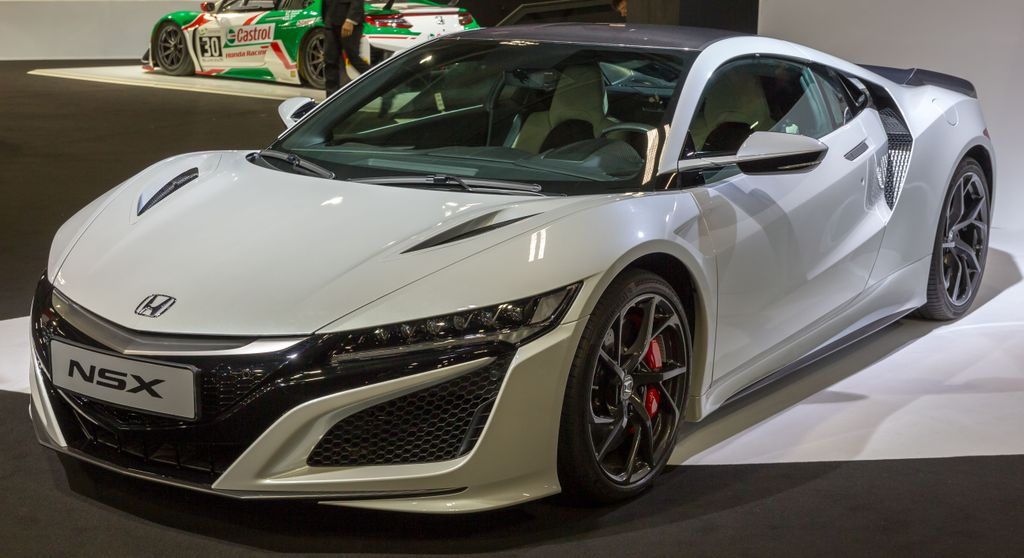
12. **Honda NSX**
The Honda NSX occupies a profoundly significant position in the automotive world, primarily due to the extraordinary involvement of Formula 1 legend Ayrton Senna in its development. This direct connection to one of the greatest racing drivers of all time imbues the NSX with an unparalleled mystique and a level of credibility that few other road cars can claim. Senna’s meticulous input ensured that the NSX was not merely fast, but possessed an exceptional balance and responsiveness that elevated it to an entirely new level of driver engagement.
From an engineering perspective, the NSX was a marvel of its time, incorporating innovative design elements aimed at optimizing performance and handling. Its groundbreaking aerodynamics, for instance, were “inspired by an F-16 jet,” showcasing Honda’s dedication to pushing boundaries and achieving superior stability at speed. Powering this precision machine was a mid-mounted 3.0L V6 engine, a testament to Honda’s mastery of high-revving, naturally aspirated powerplants, which delivered exhilarating performance while maintaining a legendary reputation for reliability.
The NSX’s capabilities were so profound and its execution so flawless that it garnered admiration from the most discerning automotive figures, including the iconic designer Gordon Murray, famed for creating the McLaren F1. Murray himself was a fan, an endorsement that speaks volumes about the NSX’s inherent brilliance and its ability to challenge the very best supercars from Europe with a distinctly Japanese approach to engineering perfection. His appreciation underscored the NSX’s status as a benchmark for chassis dynamics and driver feel.
For motorheads, the NSX is more than just a sports car; it’s a symbol of what can be achieved when engineering excellence meets legendary talent. Its combination of groundbreaking technology, a direct connection to racing royalty, and its enduring reputation for sublime handling makes it an undeniable beauty in the automotive landscape. It remains a cherished classic, celebrated for its exquisite balance, thrilling performance, and timeless appeal to those who appreciate driving purity.
Read more about: Diving Deep: The 10 Essential Differences Between Standard AWD and Leading Manufacturer-Specific Systems

13. **Toyota Supra MK4**
The Toyota Supra MK4, widely recognized by its chassis code A80, is an undeniable legend in the automotive enthusiast community, particularly within the realms of tuning and JDM culture. While its sleek, timeless design is certainly captivating, the most special thing about this car unequivocally lies beneath its hood: the legendary 2JZ-GTE engine. This powertrain is the beating heart of the Supra’s enduring appeal, a testament to robust engineering that has inspired a generation of performance modifications and unwavering adoration.
Initially, the 2JZ-GTE was subject to the ‘Gentleman’s Agreement’ among Japanese automakers, which limited its official factory output to “just 276 horsepower.” However, this figure merely scratched the surface of the engine’s true potential. The motor is renowned for being incredibly “robust and open to a variety of upgrades,” featuring an over-engineered block and internals designed to withstand far greater stresses. This inherent strength means that, with relatively straightforward modifications, it can easily enable “many fanatics to push over 500 horsepower,” or even significantly more, transforming it into a true performance beast.
This incredible tunability is precisely why the Supra MK4 has cemented its status as a dream car for countless enthusiasts. Its potential for “insane power” makes it the ultimate “project car” for those who live to modify, customize, and push the boundaries of automotive performance. The allure isn’t just in its stock capabilities, but in the blank canvas it offers for personal expression and extreme performance pursuits, fostering a vibrant aftermarket and a passionate global community.
The Supra MK4’s cultural impact, amplified by its appearances in popular media and its dominance in drag racing and street tuning, ensures its lasting legacy. It continues to be a go-to choice for gearheads seeking a platform that combines Japanese reliability with nearly limitless power potential. For every car nerd with a wrench and a dream, owning a Supra MK4 remains a quintessential aspiration, a true icon of customizable performance.
Car Model Information: 2022 Toyota Supra 3.0 Premium
Name: Toyota Supra
Caption: Toyota GR Supra (J29/DB)
Manufacturer: Toyota
Aka: unbulleted list
Production: unbulleted list
Class: Sports car
BodyStyle: fastback,coupé
Layout: Front-engine, rear-wheel-drive layout
Predecessor: Toyota Celica (A20)
Categories: 1980s cars, 1990s cars, 2000s cars, 2010s cars, 2020s cars
Summary: The Toyota Supra (Japanese: トヨタ・スープラ, Hepburn: Toyota Sūpura) is a sports car and grand tourer manufactured and developed by the Toyota Motor Corporation beginning in 1978. The name “supra” is a definition from the Latin prefix, meaning “above”, “to surpass” or “go beyond”.
The initial four generations of the Supra were produced from 1978 to 2002. The fifth generation has been produced since March 2019 and later went on sale in May 2019. The styling of the original Supra was derived from the Toyota Celica, but it was longer. Starting in mid-1986, the A70 Supra became a separate model from the Celica. In turn, Toyota also stopped using the prefix Celica and named the car Supra. Owing to the similarity and past of the Celica’s name, it is frequently mistaken for the Supra, and vice versa. The first, second and third generations of the Supra were assembled at the Tahara plant in Tahara, Aichi, while the fourth generation was assembled at the Motomachi plant in Toyota City. The 5th generation of the Supra is assembled alongside the G29 BMW Z4 in Graz, Austria by Magna Steyr.
The Supra traces much of its roots back to the 2000GT owing to an inline-6 layout. The first three generations were offered with a direct descendant to the Crown’s and 2000GT’s M engine. Interior aspects were also similar, as was the chassis code “A”. Along with this name, Toyota also included its own logo for the Supra. It was derived from the original Celica logo, being blue instead of orange. This logo was used until January 1986, when the A70 Supra was introduced. The new logo was similar in size, with orange writing on a red background, but without the dragon design. That logo, in turn, was on Supras until 1991 when Toyota switched to its current oval company logo. The dragon logo was a Celica logo regardless of what colour it was. It appeared on the first two generations of the Supra because they were officially Toyota Celicas. The dragon logo was used for the Celica line until it was also discontinued.
In 1998, Toyota ceased sales of the fourth-generation Supra in the United States. Production of the fourth-generation Supra for worldwide markets ended in 2002. In January 2019, the fifth-generation Supra, which was co-developed with the G29 BMW Z4, was introduced.
Get more information about: Toyota Supra
Buying a high-performing used car >>>
Brand: Toyota Model: Supra
Price: $55,582 Mileage: 30,565 mi.
Read more about: The Real Cost of Speed: 14 Sports Cars & What Financial Experts REALLY Think About Your Investment

14. **Nissan Skyline GT-R R34**
Another JDM legend that has carved an unforgettable niche in automotive history is the Nissan Skyline GT-R R34. Its meteoric rise to fame was significantly boosted by extensive exposure in popular culture, from being famously “starred in the movie 2 Fast 2 Furious” to its iconic presence in PlayStation’s classic racing simulator, Gran Turismo. These appearances helped to cement its status as a global automotive icon, introducing its distinctive profile and formidable performance to a new generation of enthusiasts and solidifying its place in the public consciousness as the ultimate Japanese performance car.
Released in 1999, the R34 quickly earned an exceptional reputation among fans, not just for its striking aesthetics but primarily for its advanced engineering. At its core lay the legendary RB26DETT inline-six engine, a twin-turbocharged masterpiece renowned for its power delivery and incredible tunability. This was complemented by the sophisticated ATTESA E-TS all-wheel drive system and HICAS rear-wheel steering, technologies that together provided unparalleled grip, handling, and stability, making it a formidable track weapon and an exhilarating road car.
Just like its contemporary, the Supra, the R34 was also “tuned down to respect the Gentleman’s Agreement” regarding horsepower output in the Japanese domestic market. However, its true capabilities were well known, and like the 2JZ, the RB26DETT was incredibly robust and responsive to modifications. This inherent potential for significant power upgrades only added to its allure for tuners and performance enthusiasts, making it a cornerstone of the street racing scene and a constant challenge to more expensive supercars.
The Nissan Skyline GT-R R34 remains a powerful “symbol of the peak Japanese automotive engineering era,” representing a golden age when advanced technology met raw performance with a uniquely Japanese flair. Its distinctive silhouette, formidable performance, and deep cultural resonance ensure that it continues to be one of the most coveted dream cars for enthusiasts worldwide, a vehicle that perfectly embodies the spirit of innovation and driving passion.
Car Model Information: 2020 BMW X3 xDrive30i
Name: Nissan Skyline GT-R
Caption: 2002 Nissan Skyline GT-R V·spec II (BNR34)
Manufacturer: Nissan
Production: unbulleted list
Assembly: unbulleted list
Class: Sports car
Related: unbulleted list
Transmission: unbulleted list
Predecessor: Nissan Skyline#BLRA-3 Skyline Sport
Successor: Nissan GT-R
Categories: 1970s cars, 1980s cars, 1990s cars, 2000s cars, 24 Hours of Le Mans race cars
Summary: The Nissan Skyline GT-R (Japanese: 日産・スカイラインGT-R, Hepburn: Nissan Sukairain GT-R) is a Japanese sports car based on the Nissan Skyline range. The first cars named “Skyline GT-R” were produced between 1969 and 1972 under the model code KPGC10, and were successful in Japanese touring car racing events. This model was followed by a brief production run of second-generation cars, under model code KPGC110, in 1973.
After a 16-year hiatus, the GT-R name was revived in 1989 as the BNR32 (“R32”) Skyline GT-R. Group A specification versions of the R32 GT-R were used to win the Japanese Touring Car Championship for four years in a row. The R32 GT-R also had success in the Australian Touring Car Championship, with Jim Richards using it to win the championship in 1991 and Mark Skaife doing the same in 1992, until a regulation change excluded the GT-R in 1993. The technology and performance of the R32 GT-R prompted the Australian motoring publication Wheels to nickname the GT-R “Godzilla” in its July 1989 edition. Wheels then carried the name through all the generations of Skyline GT-Rs, most notably the R34 GT-R, which they nicknamed “Godzilla Returns”, and described as “The best handling car we have ever driven”. In tests conducted by automotive publications, R34 GT-R have covered a quarter of a mile (402 metres) in 12.2 seconds from a standing start time and accelerated from 0–100 km/h (0–62 mph) in 4.4 seconds.
The Skyline GT-R became the flagship of Nissan performance, showing many advanced technologies including the ATTESA E-TS all-wheel drive system and the Super-HICAS four-wheel steering. Today, the car is popular for import drag racing, circuit track, time attack and events hosted by tuning magazines. Production of the Skyline GT-R ended in August 2002. The car was replaced by the GT-R (R35), an all-new vehicle based on an enhanced version of the Skyline V36 platform. Although visibly different, the two vehicles share similar design features and are manufactured in the same factory.
The Skyline GT-R was never manufactured outside Japan, and the sole export markets were Hong Kong, Singapore, Australia and New Zealand, in 1991, and the UK (in 1997, due to the Single Vehicle Approval scheme). They are also popular across the world as used Japanese imports.
Despite this, the Skyline GT-R has become an iconic sports car as a grey import vehicle in the Western world (mainly the United Kingdom, Australia, New Zealand, South Africa, Ireland, Canada, and the United States). It has become notable through pop culture such as The Fast and the Furious, Initial D, Shakotan Boogie, Tokyo Xtreme Racer, Wangan Midnight, Need for Speed, Forza, Driving Emotion Type-S, Test Drive, and Gran Turismo.
In 2019, Nismo announced that it would resume production of spare parts for all generations of the Skyline GT-R, including body panels and engines.
Get more information about: Nissan Skyline GT-R
Buying a high-performing used car >>>
Brand: Nissan Model: Skyline GT-R R34
Price: $26,485 Mileage: 40,004 mi.
Read more about: Beyond Limits: The Human Art of Drifting and the Autonomous Tech Redefining Sideways Driving
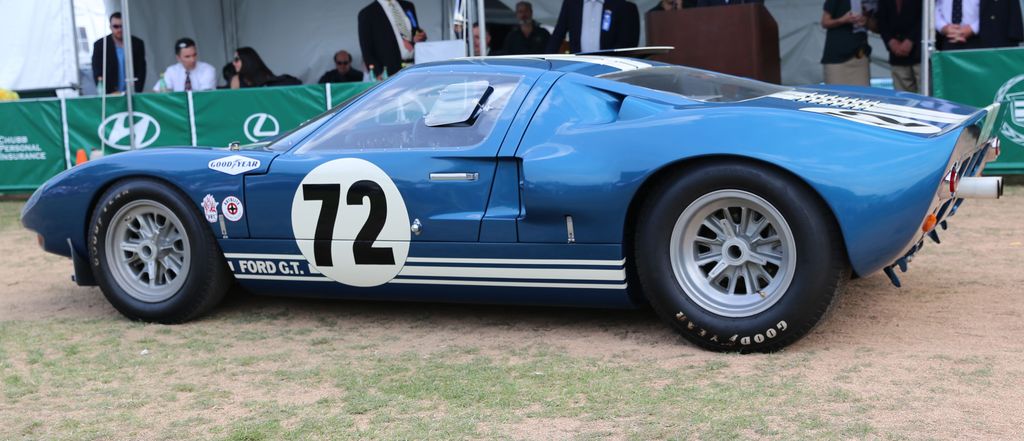
15. **Ford GT40**
Concluding this extraordinary list is a legend unlike any other, a car that profoundly “changed the way people look at American cars”: the Ford GT40. This iconic machine is far more than a mere race car; it’s a testament to audacious ambition, national pride, and a gripping rivalry that transcended the world of motorsport, leaving an indelible mark on automotive history and the hearts of speed freaks everywhere.
The very reason for its birth was rooted in a fierce and now legendary “1960s Ford LeMans rivalry with Ferrari.” After Enzo Ferrari famously snubbed a potential acquisition by Ford, Henry Ford II vowed to beat the dominant Italian marque on the world’s most prestigious endurance racing stage. This personal vendetta ignited a colossal effort, pouring immense resources and talent into creating a car capable of challenging Ferrari’s seemingly insurmountable dominance at Le Mans.
The eventual triumph of the GT40 was a colossal team effort, but it was the combined genius and relentless drive of figures like “Mr. Carrol Shelby and Ken Miles” that truly brought the dream to fruition. Their expertise, combined with countless hours of engineering and development, culminated in a historic moment. In 1966, the GT40 didn’t just win; it dominated, famously making “Ferrari taste dust at Le Mans,” securing an unprecedented 1-2-3 finish that shocked the automotive world and forever etched its name in the annals of racing glory.
A car that successfully challenged and ultimately conquered such a dominant motorsport figure in history, the GT40 stands as the ultimate jaw-dropping vehicle for speed freaks and a powerful symbol of American ingenuity and perseverance. Its incredible story of triumph against the odds, coupled with its timeless design and blistering performance, ensures its place as a perennial dream machine. For any enthusiast, the Ford GT40 represents the pinnacle of racing ambition, a true legend that continues to inspire awe and reverence for its role in shaping both automotive history and national pride.
Car Model Information: 1966 Ford GT40
Name: Ford GT40
Caption: Ford GT40 Mk.I in JWA Gulf Oil racing colors
Manufacturer: Ford Advanced Vehicles,John Wyer,Kar Kraft,Holman-Moody,Shelby American
Production: 1964–1969
Assembly: Slough,Los Angeles
Designer: Ron Bradshaw
Class: Group 4 (racing),Group 5 (racing),Group 6 (racing)
BodyStyle: coupé
Layout: MR layout
Engine: Cubic inch,289 CID (4737 cc) V-8,302 CID (4942 cc) V-8,427 CID (6997 cc) V-8
Transmission: Manual transmission
Wheelbase: 95 in
Abbr: on
Length: 160 in
Width: 70 in
Height: 40.5 in
Weight: convert
Successor: Ford P68
Sp: uk
Categories: 24 Hours of Le Mans race cars, All Wikipedia articles needing clarification, All Wikipedia articles written in British English, All articles needing additional references, All articles that may contain original research
Summary: The Ford GT40 is a high-performance mid-engined racing car originally designed and built for and by the Ford Motor Company to compete in 1960s European endurance racing and the World Sportscar Championship. Its specific impetus was to beat Scuderia Ferrari, which had won the prestigious 24 Hours of Le Mans race for six years running from 1960 to 1965. As rules of the time required that GT cars were built in dozens and sold, around 100 cars in total have been made, mostly as 289 cu in (4.7 L) V8-powered Mk Is, of which at least 50 were made in 1965, which allowed FIA-homologation as Group-4-Sportscar for 1966 until 1971. This gave the old MK.I car of Gulf-Wyer the chance to enter and win Le Mans in 1968 and 1969 after prototypes had been limited to 3 litre, with the performance of the Ford 7-litre-V8 in the factory 1966 Mk.II and 1967 Mk.IV prototypes causing this rule change, which also banned the 4-litre V12 Ferrari 330P4 and others after 1967. The Mk.III designation was used for some road-legal cars.
The Ford GT40 debuted in 1964, and improvements in 1965 led to Ford winning World Championships categories from 1966 to 1968. The first Le Mans win came in 1966 with three 427 cu in (7.0 L) powered Mk.II prototypes crossing the finish line together, the second in 1967 with the same engine now in quite different US-built Mk.IV prototype chassis similar to the “J-car” mule. In order to lower ever-higher race top speeds, a rule change from 1968 onwards limited prototypes to 3.0 litre Formula 1 engines; the sportscar “loophole”, however, allowed the private JW “Gulf Oil” team to win at Le Mans in 1968 and 1969 running a Mk.I with a 5.0 litre engine.
The GT40 effort began in Britain in the early 1960s when Ford Advanced Vehicles began to build the Mk I, based upon the British Lola Mk6, in Slough, UK. After disappointing race results, the engineering team was moved in 1964 to Dearborn, Michigan, US, to design and build cars by its advanced developer, Kar Kraft. All chassis versions were powered by a series of American-built Ford V8 OHV engines modified for racing.
In the 1966 Le Mans, the GT40 Mk II car broke Ferrari’s winning streak, making Ford the first American manufacturer to win a major European race since Jimmy Murphy’s Duesenberg in the 1921 French Grand Prix. In the 1967 Le Mans, the GT40 Mk IV car became the only car developed and assembled entirely (both chassis and engine) in the United States to achieve the overall win at Le Mans.
Get more information about: Ford GT40
Buying a high-performing used car >>>
Brand: Ford Model: GT40
Price: $110,000 Mileage: 13,350 mi.
Read more about: Beyond the Blockbuster: A Deep Dive into Dwayne ‘The Rock’ Johnson’s Multi-Million Dollar Car Collection
As we bring this exhilarating journey to a close, it’s clear that the allure of these 15 legendary automobiles extends far beyond their technical specifications or their initial sticker price. Each car we’ve explored, from the pioneering Miura to the conquering GT40, embodies a unique spirit of innovation, passion, and artistic excellence that has captivated generations. They are not merely machines; they are rolling sculptures of ambition, each with a story that fuels the fantasies of enthusiasts, reminding us why we fall head over heels for the world of wheels. These dream machines, whether they broke speed records, set design trends, or conquered formidable rivals, stand as timeless testaments to humanity’s relentless pursuit of perfection on four wheels, forever etched into the collective consciousness of those who truly love cars. For every gearhead, owning one of these icons remains the ultimate aspiration, a tangible piece of automotive history that represents the very best of what the industry has ever produced.



